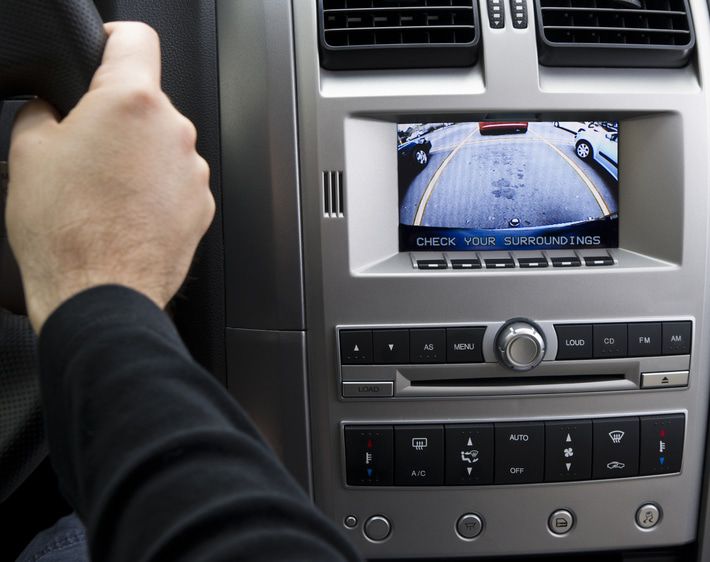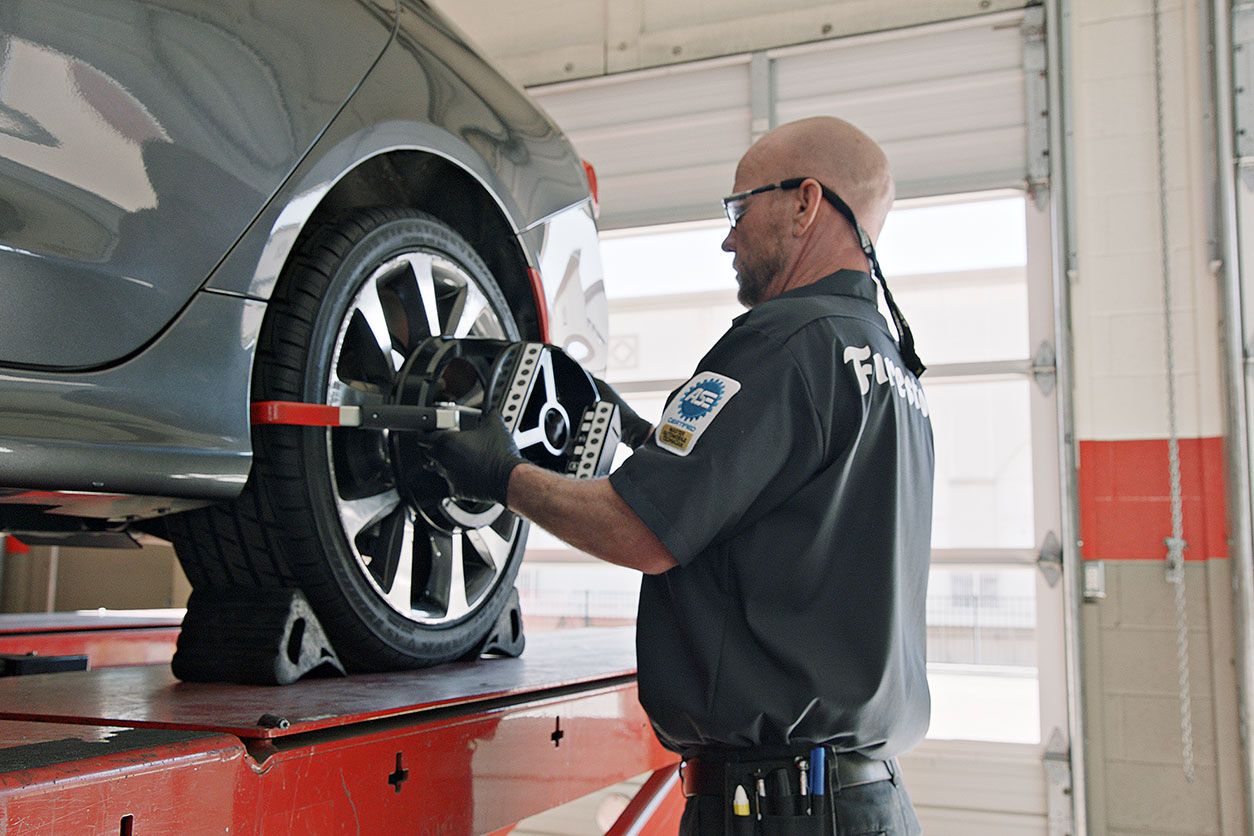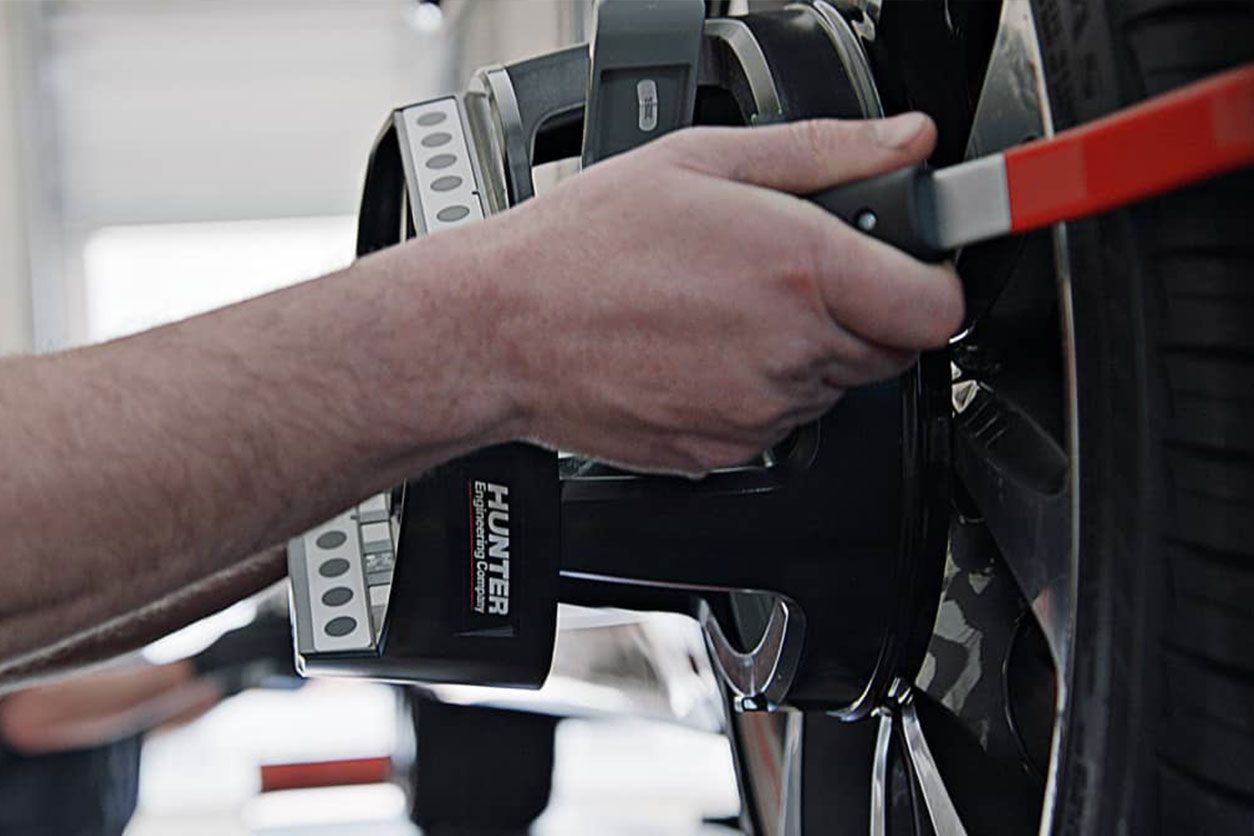Those old, futuristic sci-fi movies practically promised us that we’d have flying cars by now. Though it might be a while before there are highways in the sky, that hasn’t stopped car manufacturers from taking modern vehicles to the next level. For example, most newer vehicles come equipped with Advanced Driver-Assistance Systems (ADAS). These advanced features allow cars to do things like drive themselves, self-park, and emergency brake!
To ensure they work properly, these advanced safety features require special attention. Advanced Driver-Assistance Systems rely on input from a variety of sensors to help them make decisions about the direction and speed of your vehicle. In cars with ADAS, one misaligned wheel or misdirected sensor could cause unnecessary emergency braking, poor self-parking performance, or an outright dangerous situation!
To protect yourself, your car, and your passengers, many ADAS-enabled vehicle manufacturers recommend a specialized wheel alignment process. However, this information isn't widely known. Follow along as we go into more detail about ADAS, ADAS alignments, and how they differ from a typical alignment.
What makes Advanced Driver-Assistance Systems unique?
Advanced Driver-Assistance Systems are vehicle features that utilize computers to assist with the car’s safety and overall driving experience. Sensors, cameras, lasers, and radars fire hundreds of times per second and tell your vehicle’s computer “brain” how to act or react to the conditions around it. For instance, vehicles equipped with Automatic Parking can observe their surroundings and take control of the steering wheel to do the parking job for you.
Does my car have ADAS?
Your vehicle doesn’t need autonomous driving capabilities to have ADAS. There are many vehicle features included in Advanced Driver-Assistance Systems, some of which have become standard. If you’re unsure if your vehicle has ADAS features, here are a few ways to check.
Does your car have ADAS? If so, keep reading! Your vehicle needs a little extra TLC when it's at the shop.
What happens during a “normal” alignment?
A wheel alignment is a computerized process in which a technician aligns all four wheels of your vehicle to ensure it drives straight. This alignment is done by adjusting three angles of each wheel, known as camber, caster, and toe.
Each angle adjustment is so small that it’s difficult to notice by simply looking at the tire, which is why technicians use a sensitive computer to ensure each angle is adjusted according to the vehicle manufacturer’s specifications.
Improper wheel alignment can not only wear your vehicle’s tires down faster, but it can also decrease overall safety while driving. You can prolong the life of your tires and ensure a safe driving experience with routine wheel alignments, whether your vehicle is equipped with ADAS technology or not.
How is an ADAS vehicle alignment different?
A standard wheel alignment is a highly technical process requiring a specialized computer and a skilled technician. Since ADAS vehicles use computerized components to control things like steering, brakes, and cruise control, they require an even more specialized alignment process called a Safety Systems Alignment.
This alignment not only adjusts the three angles of the tire, but it also calibrates the ADAS cameras, sensors, and radar that help control the computerized components. These components rely on proper alignment of the vehicle and they may not function correctly if the vehicle is out of alignment.
For instance, some rear camera systems track your wheel angle to display the path your vehicle will travel as you reverse. If the camera isn’t calibrated correctly or the steering wheel is out of alignment, the camera will show an improper image and potentially turn a safety feature into a hazardous situation.
When getting a Safety Systems Alignment, there are a few things to note.
Do I need a Safety Systems Alignment?
If your vehicle has ADAS safety features such as automatic emergency braking, adaptive cruise control, a rear camera system, or active front steering, then it requires a Safety Systems Alignment.
You typically know it’s time for an alignment when your car drifts to one side or the other when you drive straight or you have new tires installed. However, that may not always be the case with an unaligned ADAS vehicle. Your vehicle’s wheels may be aligned, but if the ADAS is not, you probably won’t notice until one of the ADAS features is activated. By then, it could be too late.
To ensure that all your ADAS features are working appropriately, schedule a regular Safety Systems Alignment as you would with other routine maintenance.
Bring your vehicle to your nearest Firestone Complete Auto Care to find out if it needs a Safety Systems Alignment. Our expert technicians have the right equipment to ensure your vehicle and all its safety features are running like they should.



